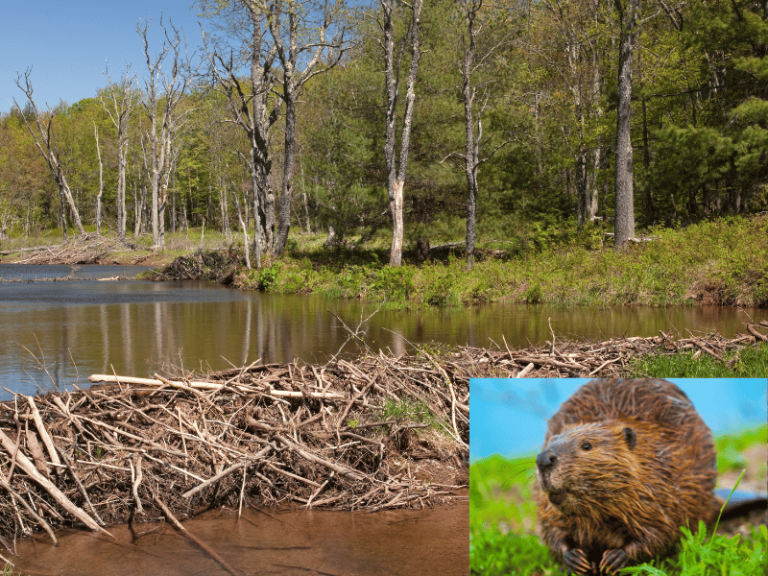The beaver is a peculiar animal primarily found in the Soviet Union and North America, also present in the border regions of China’s Xinjiang and Mongolia. It has a broad head, a flat face, and a strange appearance with many sharp teeth capable of gnawing through large trees and various hard objects. Beavers are semi-aquatic mammals that build their nests along the banks, resembling rounded-roof structures from afar. These lodges are constructed very robustly with walls about 0.7 meters thick. They have two exits: one leading to the land and another connected underwater through a tunnel, allowing them to maintain their habits of living both on land and in water. Furthermore, each lodge is divided into two or three levels; the upper part is dry and serves as the entire “family’s” living quarters, while the lower part below the water surface often functions as storage for food, bark, or wood. For safety, an exit from the lower level storage area is built underwater at a depth of over 1 meter, preventing it from freezing over in winter or drying out during droughts. To balance the water levels beneath the lodge, near riverbanks, they specially construct sturdy dams using tree trunks and stones, filling gaps with mud packed by their tails. Without these dams, their “homes” would be flooded during river surges, making it impossible to keep their dwellings dry, thereby rendering their aquatic and terrestrial lifestyle unsuitable.
Beaver families live together as a whole. Each family has a specific territorial range and does not intrude on others. If unfamiliar male and female beavers are forcibly brought together by humans, they engage in fierce battles, prompting the need to separate them. However, within a few days of being reunited, the male and female beavers slowly approach each other, shedding glistening tears from their eyes, signaling reconciliation and peace.

